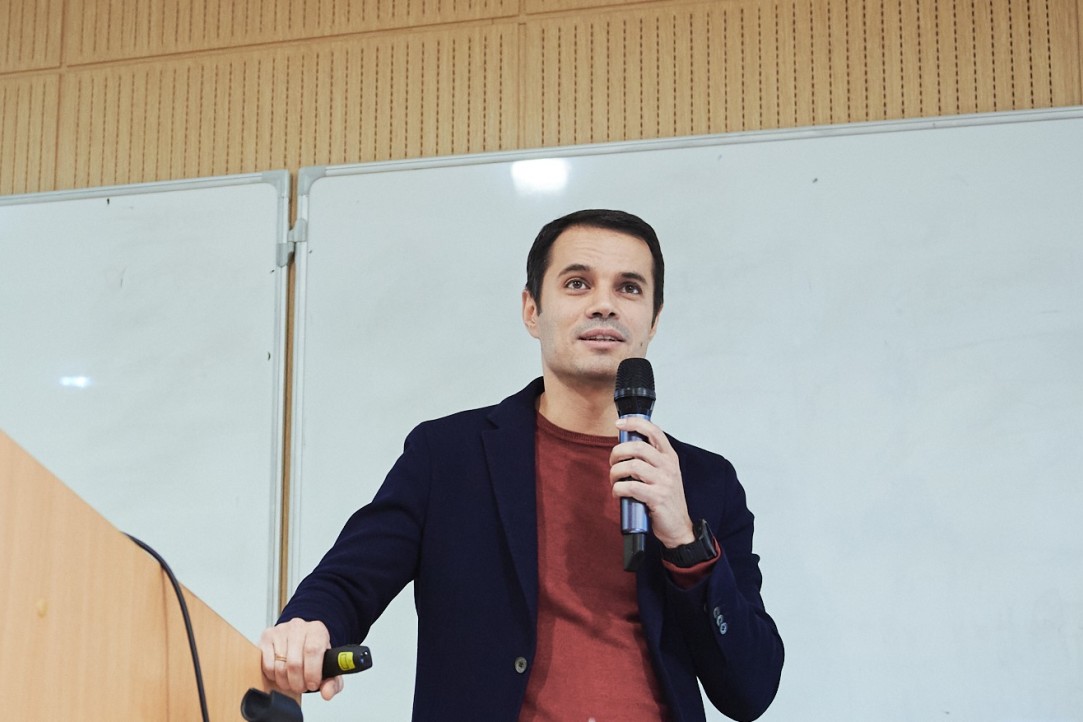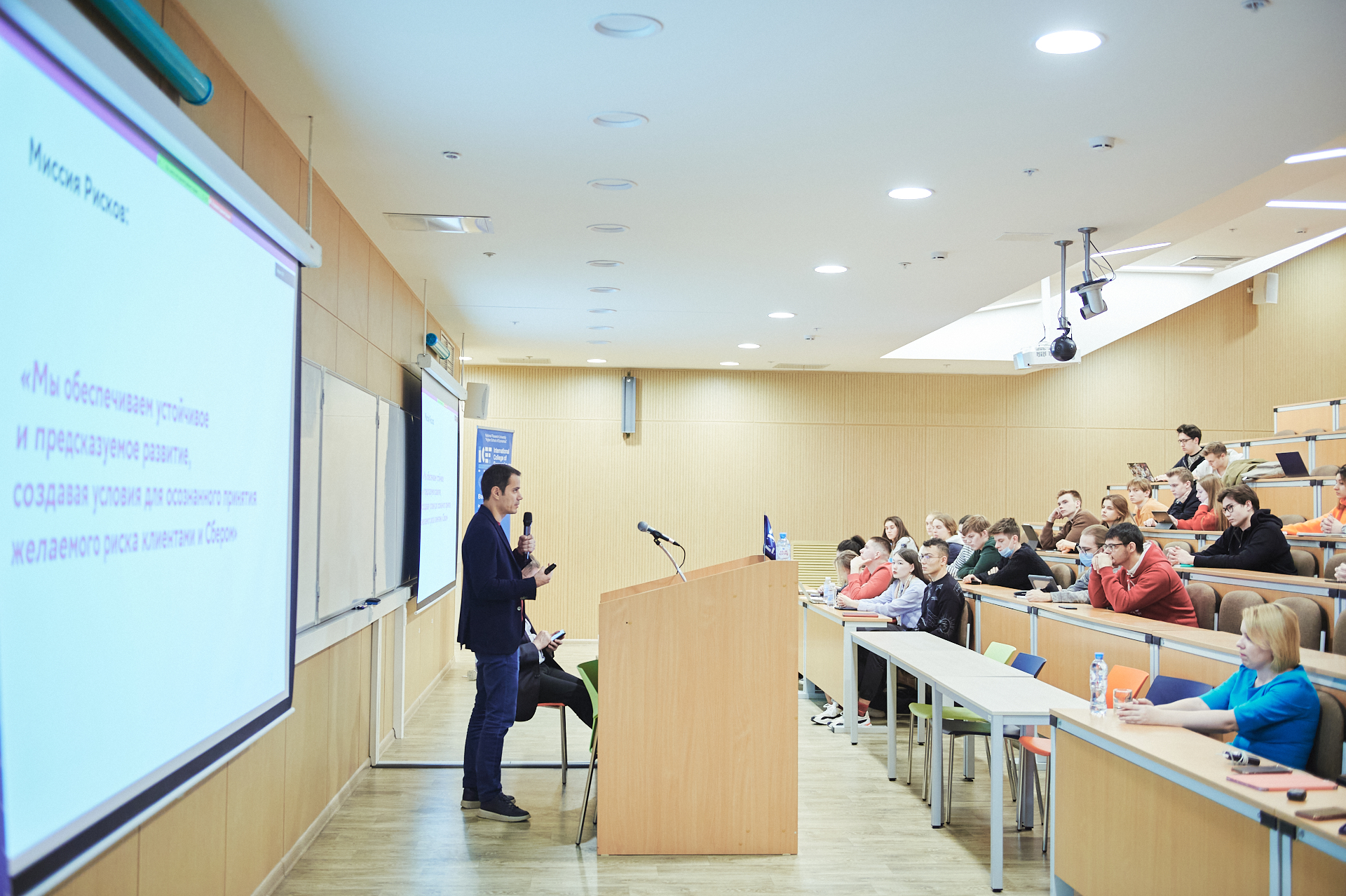Hackers, Models, and Greenhouse Gases—Breaking Down Risk Management

For companies, development inevitably comes with an increase in the volume and variety of risks faced. Risk management helps to foresee these risks, adapt to them, and achieve strategic goals. Dzhangir Dzhangirov, Senior Vice President, Chief Risk Officer at SBER, delivered a lecture to HSE ICEF students on how risk management works in the banking system and what new challenges companies face in the fintech era.
‘Today’s management defines what will happen tomorrow’—this is how Dzhangir Dzhangirov describes his work, noting that risk management focuses not only on metrics, but also on sustainability and predictability of development. Risk management helps companies achieve strategic goals while reducing expected and unforeseen losses, says Dzhangir.
There are four stages in a company’s risk management cycle: risk identification, risk assessment, management, and monitoring of the results. At each stage, managers apply specific practices and procedures.
Dzhangir paid special attention to risk identification. Risk identification and classification is a strategically important process that becomes more complicated every year. That is why SBER regularly reviews and updates its risk map.
Reviewing key risks to the global economy makes it possible to set benchmarks for local economies and companies. For example, in 2021, the World Economic Forum (WEF) included climate risks in the top five global challenges based on the results of a global risks study. By contrast, in 2010, the main focus was on economic risks.
Dzhangir highlighted several risks relevant to SBER. The first is technological: the risk of direct or indirect losses resulting from violations in the work of contractors, incorrect working configurations and processes, the unavailability of IT systems, etc.

Cyberattacks also present serious risks. Every year, the global economy loses about 1% of its GDP due to cybercrimes. SBER undertakes significant efforts to protect its systems, networks and software from digital attacks.
Model risk (the risk of adverse consequences due to the incorrect application of models) and deterioration in the quality of the models themselves are also challenges for the bank. In the modern world, companies are making more and more decisions based on models and algorithms, which means that the seriousness of model risk is growing.
ESG risks rank fourth in SBER’s risk map. Each letter stands for a separate type of risk: E (environmental)—risks of a negative impact on the environment; S (social)—risks of a negative impact on society, violation of occupational safety requirements, discrimination and infringement of rights; G (governance)—risks associated with ethically unacceptable corporate governance practices such as tax evasion, corruption, and violations of business ethics.
Kofi Annan (Secretary-General of the United Nations from 1997–2006. - Ed.) was the first to define ESG risks in 2004. ESG is now a key benchmark for the business environment, especially due to the climate agenda. Dzhangir adds that SBER is actively developing the ESG agenda in Russia.
Businesses constantly face new challenges arising from vastly different factors. However, even when the rules change drastically and the situation becomes turbulent, it is important not to react emotionally, but to remain rational and technology-focused. Proper risk assessment allows companies to prepare for difficult situations and quickly find a way out of them, says Dzhangir.
By Evgenia Romadanova, Research Assistant at HSE Laboratory for Economic Journalism
See also:
Do Banks Always Need to Know as Much as Possible about Borrowers?
Economists from HSE University have demonstrated that collecting as much information as possible about borrowers does not always decrease banks’ risks. Sometimes, more is not better: on the contrary, increasing the volume of data might increase the risks of loan defaults to a certain extent. The study was published in the WP BRP HSE University, Series: Financial Economics series of working papers.
The Russian Banking System has High Adaptability
How has the crisis influenced the banking sector? Why is the Central Bank increasing its requirements from bankers? How many banks does the economy need altogether? These were the topics discussed by Mikhail Kovrigin, director of the Central Bank of Russia’s Banking Regulation and Oversight Department, at a meeting with members of the HSE Banking Institute.
Iftekhar Hasan: Institutional development ensures banking system stability
The HSE has held the fourth annual workshop ‘Banking in Emerging Markets: Challenges and Opportunities’, organized by National Research University Higher School of Economics (CInSt HSE) with the support of the Bank of Finland Institute for Economies in Transition (BOFIT).
Dr. John Hampton: ‘Education is Preparing Young People for a Global Landscape of Business’
John Hampton, Professor of Business at Saint Peter’s University (New Jersey, USA), conducted a master class, Risk Management for Competitive Advantage, on March 25, 2013, at the HSE Banking Institute.
The IMF’s Message Is ‘Target What You Can Hit’
On September 28th 2011, Daniel Leigh and John Bluedorn, economists from the International Monetary Fund (IMF), presented the latest issue of the World Economic Outlook (forecasts and analysis) ‘Slowing growth, rising risks’ at the Higher School of Economics.
Does Russian banking face troubles?
While some economists suggest that bankers may be exaggerating the problems in order to win more cheap state funding, most agree that bad loans are set to surge. Y.Gavrilenkov, the HSE expert, mentiones some aspects of the problem.


